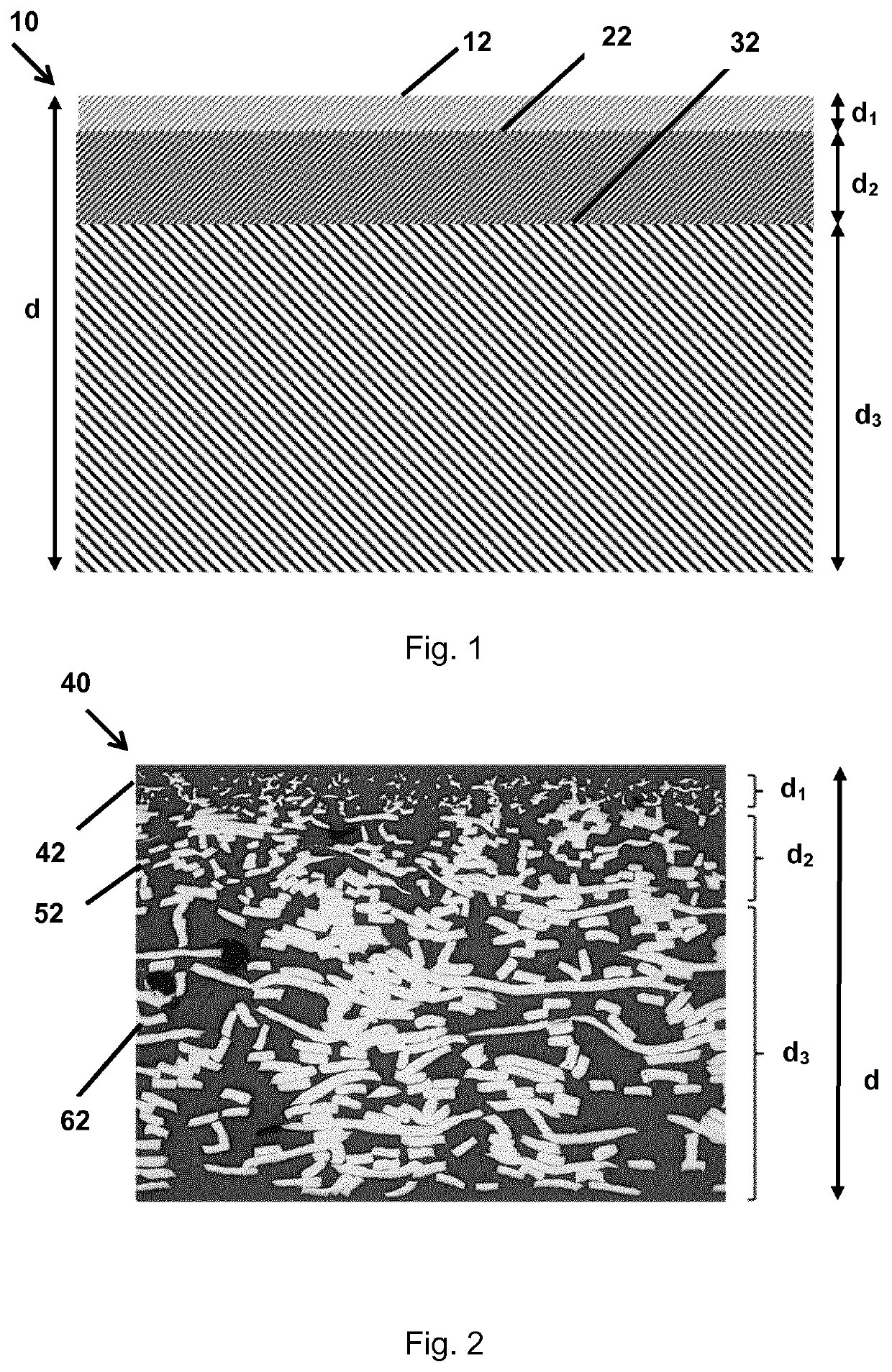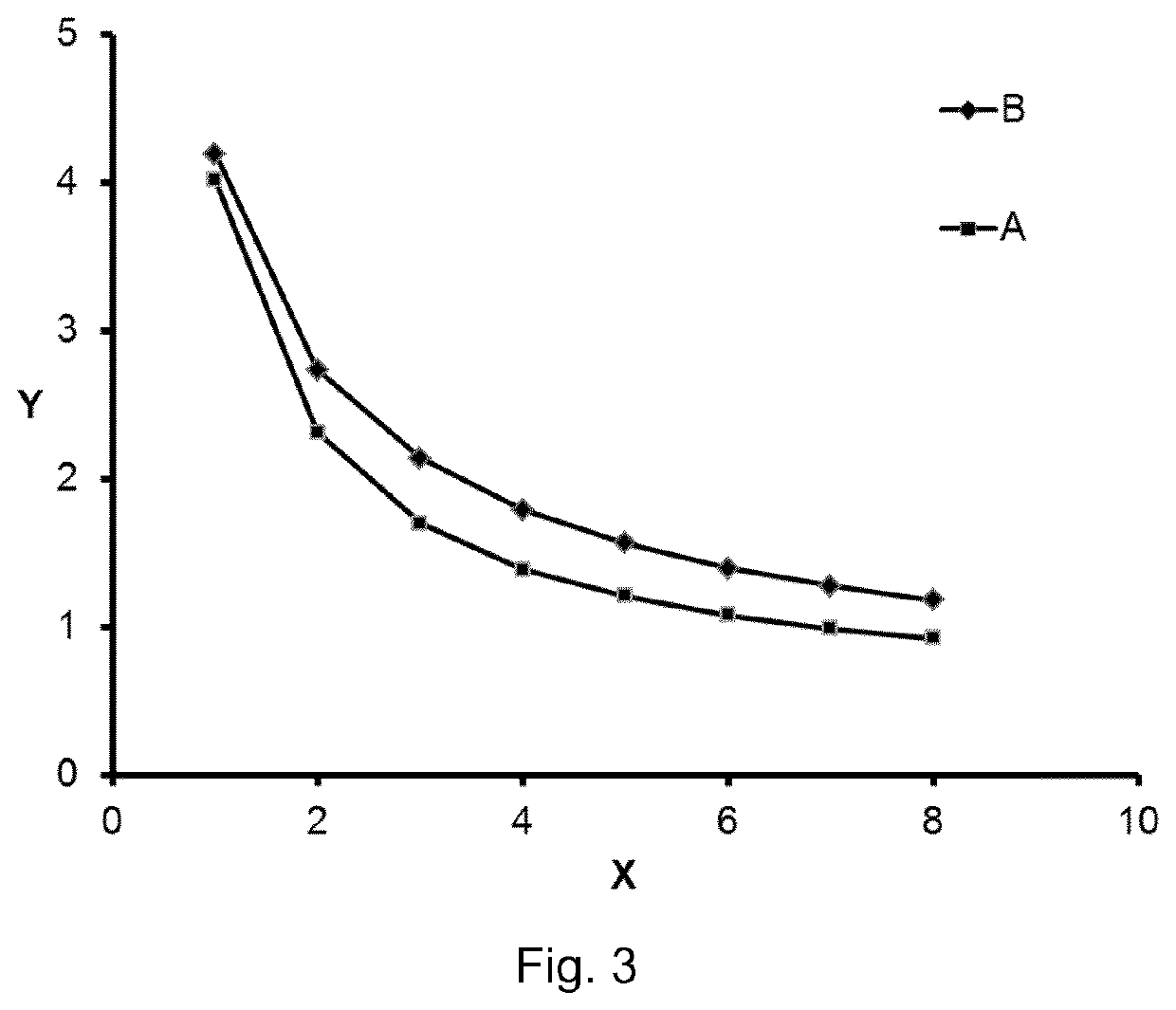Gas diffusion layer
a technology of diffusion layer and gas, applied in the direction of cell electrodes, electrical equipment, cell components, etc., can solve the problems of inevitably a certain amount of hairiness on the surface of both nonwovens, troublesome and unreliable, and early failure of bonding, etc., to achieve compact cross section and large pores
- Summary
- Abstract
- Description
- Claims
- Application Information
AI Technical Summary
Benefits of technology
Problems solved by technology
Method used
Image
Examples
Embodiment Construction
[0039]A first exemplary gas diffusion layer 10 according to the invention is schematically shown in FIG. 1. A magnified picture of the cross section of this first exemplary gas diffusion layer 40 is shown in FIG. 2. The first exemplary gas diffusion layer 10, 40 consists out of a first nonwoven layer 12, 42 of titanium fibers, a second nonwoven layer 22, 52 of titanium fibers and a third nonwoven layer 32, 62 of titanium fibers. The first nonwoven layer of titanium fibers is provided for contacting a proton exchange membrane in an electrolyser. The first nonwoven layer of titanium fibers comprises titanium fibers of 22 μm equivalent diameter. The titanium fibers of the first nonwoven layer have 14 mm length; and have a cross section, wherein the cross section has two neighbouring straight lined sides with an included angle of less than 90 degrees and one or more irregularly shaped curved sides. The first nonwoven layer has a specific mass of 250 g / m2 and a thickness d1 0.11 mm.
[0040...
PUM
| Property | Measurement | Unit |
|---|---|---|
| equivalent diameter | aaaaa | aaaaa |
| thickness | aaaaa | aaaaa |
| included angle | aaaaa | aaaaa |
Abstract
Description
Claims
Application Information
 Login to View More
Login to View More - R&D
- Intellectual Property
- Life Sciences
- Materials
- Tech Scout
- Unparalleled Data Quality
- Higher Quality Content
- 60% Fewer Hallucinations
Browse by: Latest US Patents, China's latest patents, Technical Efficacy Thesaurus, Application Domain, Technology Topic, Popular Technical Reports.
© 2025 PatSnap. All rights reserved.Legal|Privacy policy|Modern Slavery Act Transparency Statement|Sitemap|About US| Contact US: help@patsnap.com


